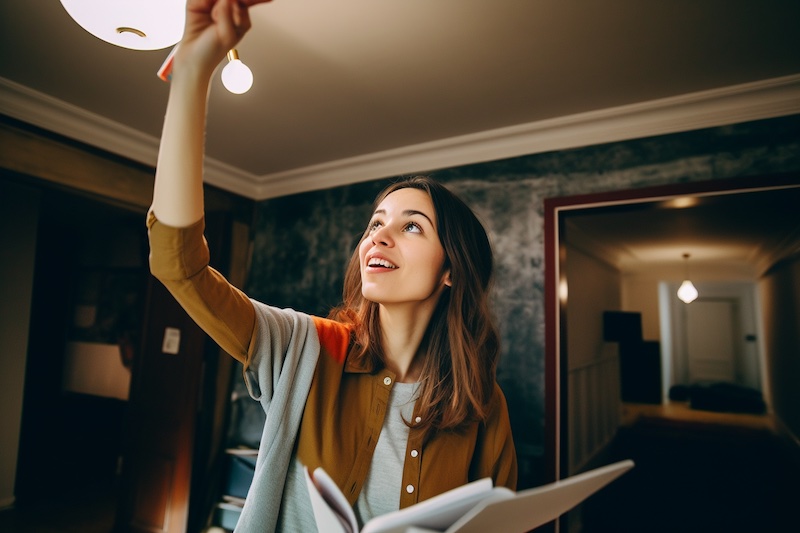How to Do a Proper Apartment Walkthrough, Step by Step
Make sure you check all the boxes before signing your lease.


With the rental market being so competitive, you may be tempted to swoop in and sign a lease the second you find a great apartment. Even when you’re feeling the pressure, it’s important not to neglect one important step: the apartment walkthrough.
Apartment walkthroughs are a vital part of your rental journey. From exploring specific features to assessing the overall atmosphere, apartment walkthroughs give you an idea of any improvements that need to be made before you drop a security deposit and move in.
Let’s take a closer look at exactly how to make the most of an apartment walkthrough, and why filling out a proper apartment walkthrough checklist is so important.

The apartment walkthrough is an essential opportunity to inspect the apartment thoroughly and identify any existing issues, maintenance concerns, or damage before signing the rental agreement. You’re protecting yourself from headache-inducing surprises down the line.
Without a walkthrough, you might be on the hook for damages or problems that were present before you even moved in. Ultimately, investing a little time in a thorough apartment walkthrough not only helps protect your security deposit but also ensures a smooth transition into your new home.
Come prepared! In addition to a print-out of your walkthrough checklist—more on that later—be sure to have the following:

As you enter each room, it’s important to keep a keen eye out for issues that could potentially impact your comfort and safety. Do your walkthrough in a methodical way, don’t simply wander around the apartment.
Let’s get walkin’.
Sure, maybe the kitchen has a shiny fridge and a cute backsplash. But you want to make sure that the fundamentals are also in order.
While exploring the living room, make sure to inspect its heating, cooling, and electrical systems, including outlets and switches.
Here, you’ll want to check for strong water pressure, adequate ventilation, and signs of mold or water damage.
If you’re viewing the apartment unfurnished, here’s where your tape measure can come in handy—you’ll have a better idea of the room you’ll have left after moving your queen-sized mattress in.
Additionally, you’ll want to focus on:
You will want to closely examine common problem areas, such as poorly insulated windows, damaged floor coverings, faulty locks, or peeling paint. Take a close look at walls, ceiling, and floors.
During the walkthrough, make it a priority to ask questions and clarify any doubts about maintenance or previous issues—including biggies like recent or past bed bug infestations.
Note if you notice any odors or unusual smells, which could point to mold, pest, or other red flags.
Also inquire about noise levels in the apartment, since your walkthrough might occur during a relatively quiet period. Is there a bar on the ground floor that’s open until 4am? Is the building underneath a flight path that causes the whole property to shake several times a day?
You may be given a physical apartment or rental property walkthrough checklist to complete and sign off on. If not, we’ve made one for you below that you can download and print out.
This handy document serves as a guide to ensure that you thoroughly inspect every aspect of the potential living space, from plumbing and electrical systems to safety features and general conditions.
It formalizes the process and lets you feel more comfortable during the walkthrough, since you’re essentially just “checking off all the boxes.”

Hopefully, everything will be in good condition, but after a walkthrough of an apartment, it’s important to address any issues you came across, from peeling paint to broken appliances or suspicious mold.
Taking the necessary steps after an apartment walkthrough gives peace of mind that when the time comes to move in, everything will be in proper working order—and you won’t end up blamed for pre-existing issues in your new place!
Kick back, relax, and make sure to get your new digs protected with renters insurance. It’ll cover your valuable stuff in the event of disasters like kitchen fires or theft, and will also provide liability protection when you host that first wild housewarming party.
A few quick words, because we <3 our lawyers: This post is general in nature, and any statement in it doesn’t alter the terms, conditions, exclusions, or limitations of policies issued by Lemonade, which differ according to your state of residence. You’re encouraged to discuss your specific circumstances with your own professional advisors. The purpose of this post is merely to provide you with info and insights you can use to make such discussions more productive! Naturally, all comments by, or references to, third parties represent their own views, and Lemonade assumes no responsibility for them. Coverage may not be available in all states.
Please note: Lemonade articles and other editorial content are meant for educational purposes only, and should not be relied upon instead of professional legal, insurance or financial advice. The content of these educational articles does not alter the terms, conditions, exclusions, or limitations of policies issued by Lemonade, which differ according to your state of residence. While we regularly review previously published content to ensure it is accurate and up-to-date, there may be instances in which legal conditions or policy details have changed since publication. Any hypothetical examples used in Lemonade editorial content are purely expositional. Hypothetical examples do not alter or bind Lemonade to any application of your insurance policy to the particular facts and circumstances of any actual claim.